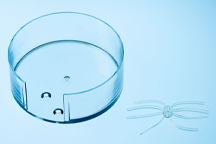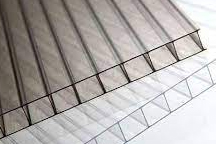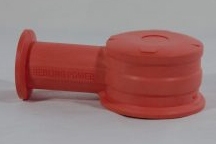Polybutylene Terephtalate (PBT)
 Rebling produces parts utilizing different grades of PBT (Polybutylene Terephtalate) for applications ranging from under the hood automotive parts to plastic components for the electrical utility industry. This crystalline material is commonly referred to by its trade name, VALOX® or Celanex®.
Rebling produces parts utilizing different grades of PBT (Polybutylene Terephtalate) for applications ranging from under the hood automotive parts to plastic components for the electrical utility industry. This crystalline material is commonly referred to by its trade name, VALOX® or Celanex®.
There are many grades of PBT available depending upon the application and intended usage. These include unfilled and high gloss versions; grades with various concentrations of glass fiber; and mineral and glass filled grades. Many grades of PBT have UL flammability approvals to UL 94 V 0 in wall thicknesses as low as .015 inches. This plastic injection molding material is available in a full range of colors. This material is an excellent candidate for molding thin cross sections due to its low melt viscosity.
Properties of PBT Plastic
As with most crystalline plastic injection molding materials, PBT has a very low coefficient of friction both against metal and against itself. The moisture absorption of PBT is also very low, in the range of .38% for the unfilled grades at equilibrium and .26% for the highly glass filled grades. This compares very favorably to other crystalline materials. For example, nylon 6-6 has 8.5 % moisture absorption at equilibrium and Acetal absorbs .8% at equilibrium. PBT also possesses excellent abrasion and creep resistance. These properties lend themselves to the use of PBT in gears, bushings and bearings, particularly when exposed to high moisture environments.
The Tensile Strength of Polybutylene Terephthalate ranges from 7000 psi for the unfilled grades to 17,000 psi for the highly glass filled grades. The Flexural Modulus for the unfilled plastic injection molding compound is 350,000 psi increasing to 1,100,000 psi for the 30% glass filled grade. The heat deflection temperatures at 66 psi range from 325°F for the unfilled grade to 420°F for the glass filled grades.
PBT has excellent chemical resistance to both strong and weak acids, but should not be used when exposure to strong bases is a possibility. Due to its low moisture absorption and crystalline nature, PBT can maintain its tensile strength when immersed in water at temperatures up to 150°F.
PBT plastic injection molding design
Rebling design engineers have extensive experience in optimizing PBT part designs for functionality, cosmetics, cost, and processing. As with other plastics, maintaining a uniform wall thickness throughout the part is essential in producing an aesthetically pleasing part. Ribs, gussets, and bosses incorporated in the design can result in sink marks if not properly specified. The notch sensitivity of PBT needs to be addressed through the use of generous corner radii in order to reduce stress concentration factors. When specifying molded threads, coarse threads are preferred over fine threads and a .005 to .010 inch radius should be specified at the root of the thread. Molded-in metal inserts need to be correctly designed to minimize any sharp corners affecting the notch sensitivity of this material. Consultation with Rebling engineering staff will insure that the molded part will meet the intent of the design engineer.
Secondary Operations for PBT plastic parts
Machining operations such as drilling, turning, milling, grinding and cutting can be performed on PBT using conventional high speed metal working equipment. Polybutylene Terephthalate can be decorated using the hot stamping and pad printing processes.
Ultrasonic welding of this material through the use of energy directors designed into the part is common. Ultrasonic insertion of metal inserts is also feasible providing the metal insert is properly designed to eliminate any sharp corners.


 Thermoplastic
Thermoplastic ABS
ABS Acetal
Acetal Acrylic
Acrylic EMI
EMI Noryl (PPO)
Noryl (PPO) Nylon (Polyamide)
Nylon (Polyamide) Polybutylene Terephtalate (PBT)
Polybutylene Terephtalate (PBT) Polyether Ether Ketone (PEEK)
Polyether Ether Ketone (PEEK) Polycarbonate (PC)
Polycarbonate (PC) Polyethylene (PE)
Polyethylene (PE) Polyphenylene
Polyphenylene Polypropylene (PP)
Polypropylene (PP) Polystyrene (PS)
Polystyrene (PS) Polysulfone (PSU)
Polysulfone (PSU) Thermoplastic Elastomers
Thermoplastic Elastomers UHMW
UHMW Polyetherimide (Ultem)
Polyetherimide (Ultem)